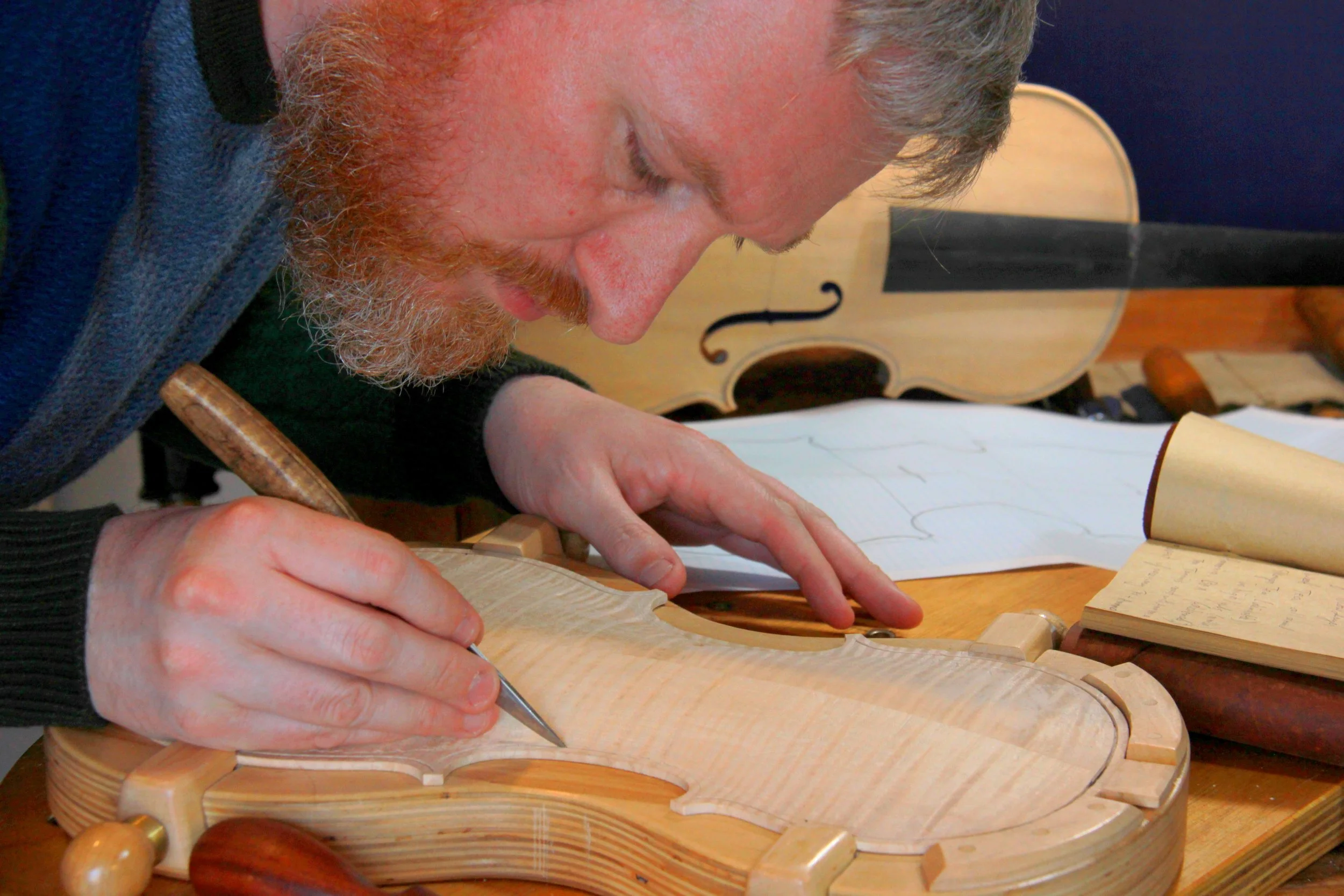Discover the Power of a Bespoke Instrument, Tailored to You
Tired of bending, stretching, and adjusting yourself to a standard-sized instrument that was never designed with you in mind? Take control of your musical life with a bespoke instrument, crafted specifically for you through our award-winning service. It’s my mission to empower musicians to live free from physical constraints, match their true potential, and inspire others through their art. I achieve this by creating unique, custom-designed instruments crafted with your measurements, tonal preferences, and playing style at heart.
“Is there a NEED for bespoke instrument design?”
Why Is Bespoke Instrument Design So Important?
Research shows that the need for custom instrument design is greater than ever:
A German study found that up to 86% of professional musicians suffer from Playing-Related Musculoskeletal Disorders (PRMD).
A 2016 Canadian study reported that up to 80% of musicians develop injuries that impact their professional careers.
Recent research confirms: up to 85% of musicians, professionals and amateurs alike, risk injury over time.
The areas most at risk?
Neck, back, shoulders, arms, elbows, wrists, hands, and fingers — the very parts musicians rely on to create their art.
Why Do So Many Musicians Get Injured?
Simply put, most instruments are not the right size for the individual player.
Violins, violas, and cellos are traditionally made to standardised full-size dimensions — dimensions established in the 16th century, primarily for European men.
Today, musicians come in all sizes, shapes, and genders — yet instruments haven’t evolved to reflect this diversity.
Manufacturers continue replicating historic models, meaning many modern players are forced into a compromise that can lead to pain, injury, and even premature career endings.
It’s time for instruments to fit the player — not the other way around.
“So WHY could up to 85% of professionals and enthusiastic amateurs get injured over time?”
The answer is simple: for most, their instrument isn’t the right size for them. The resonance bodies of violin-like instruments are standardised and set-ups are almost always the exact same on all ‘full size’ instruments. So consider this…
In the 16th century CE, when the violin family instruments emerged and standard instrument sizes were (more or less) established, they were made predominantly for male performers.
Humans were surprisingly tall then, similar to modern people actually.
If you look up average heights worldwide for women and men, it is embarrassingly clear who will be more at risk of suffering for their art. I work hard to change that for musicians worldwide with my bespoke instruments and by sharing ideas with other luthiers open to this concept. Most modern makers and manufacturers just reproduce those standardized antique models that were created for European men of the 16th century who are no longer with us.
It is time that instruments are made to fit living musicians in all our diversity, don’t you think?
“Ergonomic instruments?”
What Is an Ergonomic Instrument?
You could call it ergonomic, but it’s even more:
Our bespoke instruments are made to match your anatomy and tonal dreams perfectly.
When an instrument is too large or small for you:
Shorter players overstretch in lower positions and strain reaching higher notes.
Taller players struggle with cramped spacing in higher positions, with no larger instrument available.
Both suffer compromised comfort, tone control, and expressive freedom.
Sizing down to ¾ or 7/8 instruments doesn’t solve the problem — it reduces resonance, overtones, and the richness of sound.
A properly fitted instrument restores comfort, prevents injury, and brings your best sound to life.
“What are specific problems, that musicians experience, when the instrument isn’t right for them?”
How Do We Create Your Perfect Instrument?
The journey begins with an in-depth consultation.
We explore your sound preferences — dark and moody, bright and singing, rich and warm — and translate those emotional qualities into tonal goals.
(And yes, there are more than 829 ways musicians describe sound!)
Next, we precisely measure your ideal string length and body dimensions to design an instrument with perfect proportions — not just mathematically, but musically.
I use traditional design tools inspired by Ancient Greek architecture, combined with historical lutherie treatises, to create instruments with natural resonance and beauty.
“How do you start a project?”
Then comes the magic: the making process.
You'll be personally involved at key stages, receiving regular updates as the instrument comes to life — from the first wood shavings falling from the gouge, to the final strings tuned and ringing with your desired voice.
You will experience the entire creation journey, almost as if you were in the workshop with me, witnessing the soul of your instrument being revealed.
A Lifetime Partnership
When your bespoke instrument is complete, it’s not the end — it’s just the beginning.
I am proud to offer ongoing support, adjustments, and advice to ensure your instrument continues to match your growth as a musician.
Book your call today and let’s create something truly unique — built for your body, your sound, and your future








